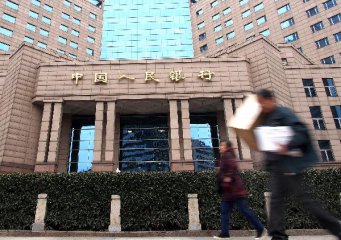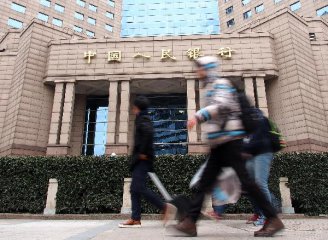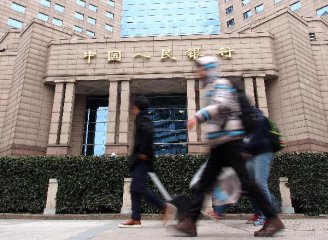
BEIJING, Nov. 21 (Xinhua) -- China's market-oriented lending interest rate reform has taken effect, as the new loan prime rate (LPR), a newly reformed benchmark revealing real borrowing cost, edged down, which will strengthen credit support for the real economy.
The one-year LPR came in at 4.15 percent Wednesday, down from 4.2 percent a month earlier. The rate for above-five-year fixing stood at 4.8 percent, down from 4.85 percent a month earlier, according to the National Interbank Funding Center on Wednesday.
This is the fourth release of the reformed LPR since the interest rate mechanism was revamped in August this year.
Both the one-year LPR and above-five-year LPR fell 5 basis points from the previous release, in line with the central bank's move on Nov. 5 to cut the rate of one-year medium-term lending facility (MLF), a monetary policy tool indicating the central bank's lending price to commercial banks, by 5 basis points, said Wen Bin, chief researcher with China Minsheng Bank.
"This indicates the central bank's policy interest rate changes will have a more direct and effective impact on LPR changes," Wen said.
The reformed LPR mechanism reflects the reported loan rates from 18 representative banks' best clients. After reform, the quote became more market-based as the quoting banks added a few basis points to the interest rates of open market operations, which mainly refers to the rates of MLF, according to the central bank.
Since the beginning of November, the central bank has carried out 600 billion yuan MLF operations, and repeatedly made reverse repo operations to stabilize liquidity expectations.
After the MLF operation on Nov. 5, the central bank Monday cut the seven-day reverse repo rate, a key interbank interest rate, by 5 basis points to 2.5 percent from 2.55 percent, the first such cut in four years.
The two key open market policy interest rates fell in November, supplemented by appropriate liquidity injection, effectively guided the market interest rates and LPRs down, and will further drive down the loan interest rates for enterprises, said Wang Qing, a chief macroeconomy analyst with Golden Credit Rating International.
China has made breakthroughs in interest rate liberalization this year.
The reformed LPR formation mechanism will help lower the real lending rates as it will be more market-based, thus making it difficult for banks to set an "implicit interest rate floor" for loans and the breaking of the implicit floor will, in turn, prompt lending rates to drop, the central bank explained in a statement.
The interest rate of newly issued enterprise loans in September dropped by 0.36 percentage points from the high in 2018, reflecting the policy effect of lowering the real interest rate of loans by means of market-oriented reform, according to the central bank.
The LPR, introduced in October 2013, was meant to better reflect market demand for funds compared to the benchmark rate. In the revamp, the changes state that the LPR will be set around the 20th of each month, instead of daily.
In addition to the previous one-year maturity, the reformed LPR also covers the maturity longer than five years, which will serve as the pricing reference for bank's long-term loans such as housing mortgages, according to the central bank.
On Wednesday, the above-five-year LPR shrank for the first time since the reform.
The interest rates on new commercial personal home loans are linked to the above-five-year LPR, and the reduction of the above-five-year LPR by 5 basis points will also help reduce the mortgage cost for new home buyers, Wen said.
The drop of above-five-year LPR is not the same as the loosening of housing mortgage policy, but mainly aims to reduce the financing costs of medium- and long-term loans for enterprises, said Chen Ji, an analyst with the Bank of Communications.
On Tuesday, Governor of the People's Bank of China Yi Gang held a meeting with executives of some financial institutions. A statement issued after the meeting said financial institutions should enhance counter-cyclical adjustments and beef up credit support for the real economy.






















Latest comments